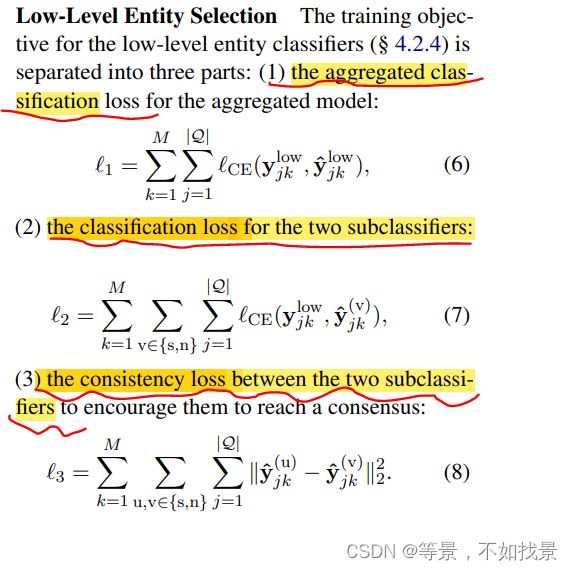- 【高中生讲机器学习】30. 理解条件随机场最清晰的思路!(上篇)
Geeker · LStar
机器学习人工智能算法机器学习人工智能条件随机场算法监督学习标注问题
创建时间:2024-12-22首发时间:2025-01-24最后编辑时间:2024-01-24作者:Geeker_LStar你好呀~这里是Geeker_LStar的人工智能学习专栏,很高兴遇见你~我是Geeker_LStar,一名高一学生,热爱计算机和数学,我们一起加油~!⭐(●’◡’●)⭐上一篇我们讲完了马尔可夫随机场MRF,那篇的最后我简单介绍了条件随机场CRF但没有展开讲。这不,这篇就来填坑
- 【高中生讲机器学习】17. 讲人话的主成分分析,它来了!(上篇)
Geeker · LStar
人工智能机器学习算法机器学习人工智能主成分分析算法无监督学习
创建时间:2024-08-13首发时间:2024-09-05最后编辑时间:2024-09-05作者:Geeker_LStar你好呀~这里是Geeker_LStar的人工智能学习专栏,很高兴遇见你~我是Geeker_LStar,一名准高一学生,热爱计算机和数学,我们一起加油~!⭐(●’◡’●)⭐那就让我们开始吧!诶嘿!这一篇想写很久啦,现在终于来了!(什么玩意都拖到开学了还没写完如果想比较好的理解这
- 【初中生讲机器学习】14. 手撕公式,一篇带你理解逻辑回归!
Geeker · LStar
人工智能机器学习算法机器学习逻辑回归人工智能算法分类算法监督学习
创建时间:2024-03-03最后编辑时间:2024-03-10作者:Geeker_LStar你好呀~这里是Geeker_LStar的人工智能学习专栏,很高兴遇见你~我是Geeker_LStar,一名初三学生,热爱计算机和数学,我们一起加油~!⭐(●’◡’●)⭐那就让我们开始吧!嘿嘿,好几篇前,好像是在线性回归那篇吧,我就说要讲逻辑回归,but当时被数学卡了一下(好吧不只一下)and正好遇上开学,
- OpenAI Sora 入门教程第二章:Sora 的文本到视频转换原理
山海青风
人工智能人工智能promptpython
一、目标对象本章面向对视频制作或人工智能技术感兴趣的技术爱好者、视频编辑人员以及希望理解视频生成模型原理的从业人员。二、Sora模型的基础原理Sora模型的核心功能是将文本转换为视频内容,这一过程包括三个主要步骤:1.文本解析Sora首先会解析输入的文本脚本,分析出其中的关键词、意图和语法结构。解析过程包括:关键词提取:识别描述场景、角色、时间和动作的词汇。语法分析:分析句子的语法结构,理解逻辑关
- AI人工智能代理工作流 AI Agent WorkFlow:在音乐创作中的应用
AGI大模型与大数据研究院
大数据AI人工智能计算科学神经计算深度学习神经网络大数据人工智能大型语言模型AIAGILLMJavaPython架构设计AgentRPA
AI人工智能代理工作流AIAgentWorkFlow:在音乐创作中的应用1.背景介绍1.1问题的由来在音乐创作领域,艺术家们一直在寻找创新的方式来提升作品的独特性、丰富性以及创作效率。随着人工智能技术的快速发展,特别是深度学习和生成模型的广泛应用,音乐创作过程正逐渐被赋予新的生命力。AI代理工作流的概念应运而生,旨在通过自动化的流程和智能辅助手段,帮助音乐人探索新的音乐风格、创作灵感,甚至生成完整
- 如何使用Agent框架来模拟群体智能?
concisedistinct
人工智能python开发语言Agent人工智能aiAI编程
Agent框架作为人工智能领域的重要工具,可以模拟复杂的群体智能行为,广泛应用于社会科学、经济学和行为学等领域。想象一个由数百万人组成的虚拟社会,每个人都有独立的行为决策规则和不同的目标。通过这样的模拟,我们能否发现隐含的社会规律?能否揭示复杂群体行为背后的动力机制?Agent框架为这一设想提供了可能,它不仅能够构建多样化的个体模型,还能实现复杂的交互、学习和协作过程,开启探索群体智能的无限可能。
- 在量子计算与AI结合的未来,是否能够实现更高效、更复杂的模式识别和数据处理?
concisedistinct
编程开发技术栈人工智能
随着量子计算和人工智能(AI)的发展,二者的结合正在成为前沿科技领域的一个重要研究方向。量子计算通过利用量子叠加和纠缠等特性,能够在某些问题上提供比经典计算机更强大的计算能力。人工智能,特别是深度学习,已经在许多领域取得了突破性的进展。本文将探讨量子计算与AI结合的创新机会,重点分析其在模式识别和数据处理中的优势与挑战。通过量子计算的并行处理能力和AI模型的智能学习能力,未来有望实现比传统计算更高
- DeepSeek-R1全面超越OpenAI o1:开源大模型训练范式革新
前端javascript
CSS技巧与案例详解vue2与vue3技巧合集VueUse源码解读人工智能在过去十年中的发展令人惊叹。其中,2017年Google发布的“AttentionIsAllYouNeed”论文奠定了神经网络架构的重要基础,推动了大规模语言模型(LLM)的突破。OpenAI早期专注于强化学习(RL),但在Transformer结构问世后,迅速调整方向,借助Google的开源研究开发出强大的LLM。然而,尽
- Python未来的发展前景到底如何?附python学习路线
大模型官方资料
python学习开发语言
对于程序员而言,了解编程语言的发展趋势,有助于个人职业成长;而对于想要入行IT的新人而言,最大的疑惑大多来自于不知道该选择哪门编程语言发展前景更好!✔有人让你学Java,因为使用的人最多;✔有人让你学Python,因为简单易学,是人工智能时代的首选语言;✔还有人让你学PHP,因为是“世界上最好的语言”;今天小编将主要介绍一下Python的发展前景!薪资待遇上海python就业形势分析:·招聘待遇,
- TensorFlow 示例项目实战与源码解析.zip
ELSON麦香包
本文还有配套的精品资源,点击获取简介:TensorFlow是谷歌大脑团队开发的开源机器学习库,广泛应用于深度学习、人工智能等领域。该压缩包提供了一个TensorFlow示例项目的源代码,涵盖了从基础操作到复杂模型的各种主题。文章将详细介绍TensorFlow的核心概念,如张量、图计算、会话、变量、梯度下降与优化器、损失函数、数据集、模型评估、模型保存与恢复以及KerasAPI。读者可通过实践这些示
- 大模型带你学pytorch课程
立杰说
Pythondeep-learningPytorchpytorch人工智能python
时间有限,大家有想看的部分,可以私信或者评论区联系,我及时补充。或者大家有想帮忙补充的也可以联系。注:大部分内容均为大模型生成,若有疏漏,欢迎指出。看起来你想要开始学习PyTorch,这是一个非常棒的选择!PyTorch是一个强大的开源机器学习框架,由Facebook的人工智能研究实验室开发,被广泛用于深度学习模型的构建和训练。让我们开始你的PyTorch旅程吧!1.预备课程大纲1.1引入Pyth
- 计算范式的变革:从图灵机到神经网络
AI架构设计之禅
AI大模型应用入门实战与进阶javapythonjavascriptkotlingolang架构人工智能
图灵机,神经网络,计算范式,深度学习,机器学习,人工智能,算法,模型1.背景介绍自20世纪中叶以来,计算机科学经历了飞速发展,计算范式也经历了深刻的变革。从最初的图灵机模型到如今的深度学习,我们不断探索更强大、更灵活的计算方式。图灵机作为计算机科学的基石,奠定了通用计算的理论基础。它以有限的符号和规则,模拟了人类的逻辑思维过程,为现代计算机的诞生提供了理论支撑。然而,图灵机的计算能力受限于其固定的
- 【Python】已解决:Python读取字典查询键报错“KeyError: ‘d‘”
屿小夏
python开发语言
个人简介:某不知名博主,致力于全栈领域的优质博客分享|用最优质的内容带来最舒适的阅读体验!文末获取免费IT学习资料!文末获取更多信息精彩专栏推荐订阅收藏专栏系列直达链接相关介绍书籍分享点我跳转书籍作为获取知识的重要途径,对于IT从业者来说更是不可或缺的资源。不定期更新IT图书,并在评论区抽取随机粉丝,书籍免费包邮到家AI前沿点我跳转探讨人工智能技术领域的最新发展和创新,涵盖机器学习、深度学习、自然
- DeepSeek 微调变得简单:使用 Python 创建自定义 AI 模型 学习针对所有用例微调 DeepSeek R1 模型
知识大胖
NVIDIAGPU和大语言模型开发教程python人工智能学习
简介当每个人都竞相在ChatGPT上构建应用程序时,精明的开发人员正在悄悄发现DeepSeek-R1的微调功能,这是一颗隐藏的宝石,可以将通用人工智能转变为专业的数字专家。通过本文,您将了解如何将通用的DeepSeekR1模型转变为专门的、特定领域的LLM。推荐文章《使用DeepseekZeroCodingExperience创建类似飞扬的小鸟游戏》权重1,DeepSeek《如何在本地电脑上安装和
- AI Native概念解析:人工智能的原生创新
勤劳兔码农
人工智能百度
AINative概念解析:人工智能的原生创新目录引言AINative概念的提出背景定义AINative的特点数据驱动自主学习实时决策可解释性AINative的应用领域医疗健康智能制造金融服务智慧城市教育科技AINative的技术架构数据层算法层应用层AINative的挑战与机遇技术挑战伦理和法律问题商业机遇AINative的未来发展趋势预测研究方向总结参考文献1.引言人工智能(AI)技术正在快速发
- 揭秘DeepSeek R1大模型:它如何像人类一样“思考”?
大模型扬叔
学习自然语言处理prompt人工智能huggingface怎么用
在人工智能领域,大模型正在掀起一场认知革命。从聊天对话到代码生成,从数据分析到创意写作,大模型的能力边界不断被突破。而近期备受关注的DeepSeekR1,凭借更高效的推理能力和更低能耗,成为行业焦点。今天,我们将深入它的“大脑”,看看它是如何工作的!DeepSeek官网:https://www.deepseek.com1.DeepSeekR1的“大脑结构”:Transformer进化版所有大模型的
- 人工智能:技术革新与未来展望
哎 你看
人工智能
人工智能(ArtificialIntelligence,简称AI)作为当今世界最具变革性的技术之一,正以迅猛的速度改变着各行各业以及我们的日常生活。从智能语音助手、推荐算法到自动驾驶、医疗诊断,AI的身影无处不在。本文将探讨人工智能的发展历程、核心技术、应用领域以及未来的发展趋势和挑战。一、人工智能的发展历程1.初期探索阶段(20世纪40年代-70年代)1943年:沃伦·麦卡洛克和约翰·皮茨提出了
- 什么叫DeepSeek-V3,以及与GPT-4o的区别
AI_1988
chatgptai人工智能
1.DeepSeek的故事1.1DeepSeek是什么?DeepSeek是一家专注于人工智能技术研发的公司,致力于打造高性能、低成本的AI模型。它的目标是让AI技术更加普惠,让更多人能够用上强大的AI工具。1.2DeepSeek-V3的问世DeepSeek-V3是DeepSeek公司推出的最新AI模型,基于DeepSeek-V2.5发展而来。它在性能、速度和成本上均有显著提升,标志着国产AI模型在
- 基于深度学习的政策效果仿真推演:实现智能化决策支持
Coderabo
DeepSeekR1模型企业级应用深度学习人工智能
政策效果仿真推演:基于DeepSeekR1的人工智能驱动决策支持系统引言政策效果仿真推演是现代社会治理中不可或缺的重要环节。通过模拟不同政策在实际执行过程中可能产生的各种影响,政府和相关机构可以更科学地制定和调整政策,从而提高治理效率和效果。然而,传统的政策仿真方法往往依赖于大量的历史数据、复杂的数学模型以及人工经验判断,存在耗时长、成本高、结果不够精准等问题。近年来,随着人工智能技术的快速发展,
- AI大模型学习的七个阶段,学完你就是大模型大师!
AGI大模型老王
人工智能学习大模型大模型学习AI大模型RAG大模型教程
第一阶段:基础理论入门目标:了解大模型的基本概念和背景。内容:人工智能演进与大模型兴起。大模型定义及通用人工智能定义。GPT模型的发展历程。第二阶段:核心技术解析目标:深入学习大模型的关键技术和工作原理。内容:算法的创新、计算能力的提升。数据的可用性与规模性、软件与工具的进步。生成式模型与大语言模型。Transformer架构解析。预训练、SFT、RLHF。第三阶段:编程基础与工具使用目标:掌握大
- 《深度揭秘LDA:开启人工智能降维与分类优化的大门》
前端人工智能算法
在当今人工智能蓬勃发展的时代,数据成为了驱动技术进步的核心要素。随着数据采集和存储技术的飞速发展,我们所面临的数据量不仅日益庞大,其维度也愈发复杂。高维数据虽然蕴含着丰富的信息,但却给机器学习算法带来了一系列严峻的挑战,这便是著名的“维度诅咒”。在众多应对这一难题的技术中,线性判别分析(LDA)脱颖而出,作为一种强大的监督学习降维方法,它在提升分类性能方面发挥着关键作用。一、LDA:核心原理大起底
- 【LangChain编程:从入门到实践】开发环境准备
AI天才研究院
计算AI大模型企业级应用开发实战大数据AI人工智能计算科学神经计算深度学习神经网络大数据人工智能大型语言模型AIAGILLMJavaPython架构设计AgentRPA
【LangChain编程:从入门到实践】开发环境准备作者:禅与计算机程序设计艺术/ZenandtheArtofComputerProgramming1.背景介绍1.1问题的由来随着人工智能技术的飞速发展,自然语言处理(NLP)在各个领域得到了广泛应用。LangChain作为一种新型的编程范式,将编程与自然语言处理相结合,为开发者提供了一种全新的编程体验。然而,想要开始LangChain编程之旅,首
- AI Agent: AI的下一个风口 具身机器人的发展趋势
AGI大模型与大数据研究院
大数据AI人工智能计算科学神经计算深度学习神经网络大数据人工智能大型语言模型AIAGILLMJavaPython架构设计AgentRPA
AIAgent:AI的下一个风口——具身机器人的发展趋势1.背景介绍1.1问题的由来随着人工智能技术的快速发展,特别是深度学习的突破性进展,我们正目睹着从“智慧大脑”向“具身智能”的转变。具身智能,即赋予机器以身体形式的能力,使之能够在物理环境中行动和互动,是人工智能领域的一个新兴且极具潜力的方向。具身机器人的发展标志着从对静态数据的处理转向对动态环境的适应与交互,这不仅是技术上的飞跃,也是人类对
- Python人工智能系列之智谱AI(上)
ABit0101
人工智能python
今天我们来聊聊如何用Python实现人工智能。我们采用的是智谱AI,所以我们要先在终端(即命令提示符cmd)使用以下指令安装第三方库:pipinstallzhipuai接下来我们要完成的是一个人工智能最最基础也是最最重要的功能——对话。fromzhipuaiimportZhipuAIclient=ZhipuAI(api_key="567942ce881bea778ddfef319da37e71.K
- 什么是大模型?大模型从入门到精通(超详细)看这一篇就够了!!!
AI产品经理
java人工智能开发语言金融运维
随着人工智能技术的发展,大模型成为了近年来的热门话题之一。本文旨在为初学者提供关于大模型的基础知识介绍,并探讨其对企业的影响、应用领域的就业前景以及如何系统地学习大模型。前排提示,文末有大模型AGI-CSDN独家资料包哦!1.什么是大模型?大模型(LargeModels),通常指的是拥有大量参数的深度学习模型。这些模型由于其规模庞大,能够捕捉到数据中的复杂模式,因此在自然语言处理(NLP)、计算机
- 在CMD命令窗口中搭建简单的Python开发环境
美丽风景-c
python开发语言Python
在CMD命令窗口中搭建简单的Python开发环境Python是一种简单易学且功能强大的编程语言,它被广泛应用于Web开发、数据分析、人工智能等各个领域。在开始Python编程之前,我们需要在CMD(命令提示符)窗口中搭建一个简单的Python开发环境。本文将详细介绍如何在CMD命令窗口中配置和使用Python开发环境。步骤1:下载Python解释器首先,我们需要下载Python解释器。请注意,在撰
- MiniMax:人工智能领域的创新先锋
程序猿000001号
人工智能
MiniMax:人工智能领域的创新先锋在人工智能领域,MiniMax正以其强大的技术实力和创新的模型架构,成为全球关注的焦点。作为一家成立于2021年12月的通用人工智能科技公司,MiniMax专注于开发多模态、万亿参数的MoE(MixtureofExperts)大模型,并基于此推出了多种原生应用,如海螺AI、星野等。本文将深入探讨MiniMax的核心技术、应用场景以及其对未来AI发展的潜在影响。
- 机器学习在网络安全领域的深度探索与实践
noVonN
机器学习web安全人工智能
一、引言在信息化社会的今天,网络安全已经成为国家、企业和个人关注的核心议题。随着网络空间中数据量爆炸性增长以及攻击手段日新月异的变化,传统的基于规则和签名的防护方法已经无法有效应对日益复杂的威胁态势。机器学习作为人工智能的重要分支,凭借其自动从大量数据中发现规律、预测未来行为以及识别异常的能力,在网络安全领域展现出了巨大的应用潜力与价值。机器学习技术通过模拟人类的学习过程,能够从历史数据中自适应地
- 机器学习基本概念
时不晴
机器学习人工智能
以下是入门机器学习所需了解的相关专业术语。这些术语涵盖了机器学习的基本概念、算法、模型评估方法以及数据处理技术等多个方面。为了便于理解,将这些术语按类别进行整理和解释。一、基本概念机器学习(MachineLearning)定义:一种让计算机通过数据学习、自动改进性能的人工智能分支。人工智能(ArtificialIntelligence,AI)定义:模拟人类智能的技术和方法,包括学习、推理、感知等。
- 人工智能机器学习基本概念详解
猿享天开
人工智能基础知识学习机器学习人工智能
人工智能机器学习基本概念详解机器学习(MachineLearning,ML)是人工智能(ArtificialIntelligence,AI)的一个重要分支,旨在让计算机系统自动从数据中学习并进行预测或决策,而无需明确的编程指令。本文将详细探讨机器学习的基本概念,包括监督学习、无监督学习、强化学习及其应用示例。一、机器学习的基本概念1.1数据数据是机器学习的基础。机器学习模型通过分析数据来识别模式和
- linux系统服务器下jsp传参数乱码
3213213333332132
javajsplinuxwindowsxml
在一次解决乱码问题中, 发现jsp在windows下用js原生的方法进行编码没有问题,但是到了linux下就有问题, escape,encodeURI,encodeURIComponent等都解决不了问题
但是我想了下既然原生的方法不行,我用el标签的方式对中文参数进行加密解密总该可以吧。于是用了java的java.net.URLDecoder,结果还是乱码,最后在绝望之际,用了下面的方法解决了
- Spring 注解区别以及应用
BlueSkator
spring
1. @Autowired
@Autowired是根据类型进行自动装配的。如果当Spring上下文中存在不止一个UserDao类型的bean,或者不存在UserDao类型的bean,会抛出 BeanCreationException异常,这时可以通过在该属性上再加一个@Qualifier注解来声明唯一的id解决问题。
2. @Qualifier
当spring中存在至少一个匹
- printf和sprintf的应用
dcj3sjt126com
PHPsprintfprintf
<?php
printf('b: %b <br>c: %c <br>d: %d <bf>f: %f', 80,80, 80, 80);
echo '<br />';
printf('%0.2f <br>%+d <br>%0.2f <br>', 8, 8, 1235.456);
printf('th
- config.getInitParameter
171815164
parameter
web.xml
<servlet>
<servlet-name>servlet1</servlet-name>
<jsp-file>/index.jsp</jsp-file>
<init-param>
<param-name>str</param-name>
- Ant标签详解--基础操作
g21121
ant
Ant的一些核心概念:
build.xml:构建文件是以XML 文件来描述的,默认构建文件名为build.xml。 project:每个构建文
- [简单]代码片段_数据合并
53873039oycg
代码
合并规则:删除家长phone为空的记录,若一个家长对应多个孩子,保留一条家长记录,家长id修改为phone,对应关系也要修改。
代码如下:
- java 通信技术
云端月影
Java 远程通信技术
在分布式服务框架中,一个最基础的问题就是远程服务是怎么通讯的,在Java领域中有很多可实现远程通讯的技术,例如:RMI、MINA、ESB、Burlap、Hessian、SOAP、EJB和JMS等,这些名词之间到底是些什么关系呢,它们背后到底是基于什么原理实现的呢,了解这些是实现分布式服务框架的基础知识,而如果在性能上有高的要求的话,那深入了解这些技术背后的机制就是必须的了,在这篇blog中我们将来
- string与StringBuilder 性能差距到底有多大
aijuans
之前也看过一些对string与StringBuilder的性能分析,总感觉这个应该对整体性能不会产生多大的影响,所以就一直没有关注这块!
由于学程序初期最先接触的string拼接,所以就一直没改变过自己的习惯!
- 今天碰到 java.util.ConcurrentModificationException 异常
antonyup_2006
java多线程工作IBM
今天改bug,其中有个实现是要对map进行循环,然后有删除操作,代码如下:
Iterator<ListItem> iter = ItemMap.keySet.iterator();
while(iter.hasNext()){
ListItem it = iter.next();
//...一些逻辑操作
ItemMap.remove(it);
}
结果运行报Con
- PL/SQL的类型和JDBC操作数据库
百合不是茶
PL/SQL表标量类型游标PL/SQL记录
PL/SQL的标量类型:
字符,数字,时间,布尔,%type五中类型的
--标量:数据库中预定义类型的变量
--定义一个变长字符串
v_ename varchar2(10);
--定义一个小数,范围 -9999.99~9999.99
v_sal number(6,2);
--定义一个小数并给一个初始值为5.4 :=是pl/sql的赋值号
- Mockito:一个强大的用于 Java 开发的模拟测试框架实例
bijian1013
mockito单元测试
Mockito框架:
Mockito是一个基于MIT协议的开源java测试框架。 Mockito区别于其他模拟框架的地方主要是允许开发者在没有建立“预期”时验证被测系统的行为。对于mock对象的一个评价是测试系统的测
- 精通Oracle10编程SQL(10)处理例外
bijian1013
oracle数据库plsql
/*
*处理例外
*/
--例外简介
--处理例外-传递例外
declare
v_ename emp.ename%TYPE;
begin
SELECT ename INTO v_ename FROM emp
where empno=&no;
dbms_output.put_line('雇员名:'||v_ename);
exceptio
- 【Java】Java执行远程机器上Linux命令
bit1129
linux命令
Java使用ethz通过ssh2执行远程机器Linux上命令,
封装定义Linux机器的环境信息
package com.tom;
import java.io.File;
public class Env {
private String hostaddr; //Linux机器的IP地址
private Integer po
- java通信之Socket通信基础
白糖_
javasocket网络协议
正处于网络环境下的两个程序,它们之间通过一个交互的连接来实现数据通信。每一个连接的通信端叫做一个Socket。一个完整的Socket通信程序应该包含以下几个步骤:
①创建Socket;
②打开连接到Socket的输入输出流;
④按照一定的协议对Socket进行读写操作;
④关闭Socket。
Socket通信分两部分:服务器端和客户端。服务器端必须优先启动,然后等待soc
- angular.bind
boyitech
AngularJSangular.bindAngularJS APIbind
angular.bind 描述: 上下文,函数以及参数动态绑定,返回值为绑定之后的函数. 其中args是可选的动态参数,self在fn中使用this调用。 使用方法: angular.bind(se
- java-13个坏人和13个好人站成一圈,数到7就从圈里面踢出一个来,要求把所有坏人都给踢出来,所有好人都留在圈里。请找出初始时坏人站的位置。
bylijinnan
java
import java.util.ArrayList;
import java.util.List;
public class KickOutBadGuys {
/**
* 题目:13个坏人和13个好人站成一圈,数到7就从圈里面踢出一个来,要求把所有坏人都给踢出来,所有好人都留在圈里。请找出初始时坏人站的位置。
* Maybe you can find out
- Redis.conf配置文件及相关项说明(自查备用)
Kai_Ge
redis
Redis.conf配置文件及相关项说明
# Redis configuration file example
# Note on units: when memory size is needed, it is possible to specifiy
# it in the usual form of 1k 5GB 4M and so forth:
#
- [强人工智能]实现大规模拓扑分析是实现强人工智能的前奏
comsci
人工智能
真不好意思,各位朋友...博客再次更新...
节点数量太少,网络的分析和处理能力肯定不足,在面对机器人控制的需求方面,显得力不从心....
但是,节点数太多,对拓扑数据处理的要求又很高,设计目标也很高,实现起来难度颇大...
- 记录一些常用的函数
dai_lm
java
public static String convertInputStreamToString(InputStream is) {
StringBuilder result = new StringBuilder();
if (is != null)
try {
InputStreamReader inputReader = new InputStreamRead
- Hadoop中小规模集群的并行计算缺陷
datamachine
mapreducehadoop并行计算
注:写这篇文章的初衷是因为Hadoop炒得有点太热,很多用户现有数据规模并不适用于Hadoop,但迫于扩容压力和去IOE(Hadoop的廉价扩展的确非常有吸引力)而尝试。尝试永远是件正确的事儿,但有时候不用太突进,可以调优或调需求,发挥现有系统的最大效用为上策。
-----------------------------------------------------------------
- 小学4年级英语单词背诵第二课
dcj3sjt126com
englishword
egg 蛋
twenty 二十
any 任何
well 健康的,好
twelve 十二
farm 农场
every 每一个
back 向后,回
fast 快速的
whose 谁的
much 许多
flower 花
watch 手表
very 非常,很
sport 运动
Chinese 中国的
- 自己实践了github的webhooks, linux上面的权限需要注意
dcj3sjt126com
githubwebhook
环境, 阿里云服务器
1. 本地创建项目, push到github服务器上面
2. 生成www用户的密钥
sudo -u www ssh-keygen -t rsa -C "xxx@xx.com"
3. 将密钥添加到github帐号的SSH_KEYS里面
3. 用www用户执行克隆, 源使
- Java冒泡排序
蕃薯耀
冒泡排序Java冒泡排序Java排序
冒泡排序
>>>>>>>>>>>>>>>>>>>>>>>>>>>>>>>>>>
蕃薯耀 2015年6月23日 10:40:14 星期二
http://fanshuyao.iteye.com/
- Excle读取数据转换为实体List【基于apache-poi】
hanqunfeng
apache
1.依赖apache-poi
2.支持xls和xlsx
3.支持按属性名称绑定数据值
4.支持从指定行、列开始读取
5.支持同时读取多个sheet
6.具体使用方式参见org.cpframework.utils.excelreader.CP_ExcelReaderUtilTest.java
比如:
Str
- 3个处于草稿阶段的Javascript API介绍
jackyrong
JavaScript
原文:
http://www.sitepoint.com/3-new-javascript-apis-may-want-follow/?utm_source=html5weekly&utm_medium=email
本文中,介绍3个仍然处于草稿阶段,但应该值得关注的Javascript API.
1) Web Alarm API
&
- 6个创建Web应用程序的高效PHP框架
lampcy
Web框架PHP
以下是创建Web应用程序的PHP框架,有coder bay网站整理推荐:
1. CakePHP
CakePHP是一个PHP快速开发框架,它提供了一个用于开发、维护和部署应用程序的可扩展体系。CakePHP使用了众所周知的设计模式,如MVC和ORM,降低了开发成本,并减少了开发人员写代码的工作量。
2. CodeIgniter
CodeIgniter是一个非常小且功能强大的PHP框架,适合需
- 评"救市后中国股市新乱象泛起"谣言
nannan408
首先来看百度百家一位易姓作者的新闻:
三个多星期来股市持续暴跌,跌得投资者及上市公司都处于极度的恐慌和焦虑中,都要寻找自保及规避风险的方式。面对股市之危机,政府突然进入市场救市,希望以此来重建市场信心,以此来扭转股市持续暴跌的预期。而政府进入市场后,由于市场运作方式发生了巨大变化,投资者及上市公司为了自保及为了应对这种变化,中国股市新的乱象也自然产生。
首先,中国股市这两天
- 页面全屏遮罩的实现 方式
Rainbow702
htmlcss遮罩mask
之前做了一个页面,在点击了某个按钮之后,要求页面出现一个全屏遮罩,一开始使用了position:absolute来实现的。当时因为画面大小是固定的,不可以resize的,所以,没有发现问题。
最近用了同样的做法做了一个遮罩,但是画面是可以进行resize的,所以就发现了一个问题,当画面被reisze到浏览器出现了滚动条的时候,就发现,用absolute 的做法是有问题的。后来改成fixed定位就
- 关于angularjs的点滴
tntxia
AngularJS
angular是一个新兴的JS框架,和以往的框架不同的事,Angularjs更注重于js的建模,管理,同时也提供大量的组件帮助用户组建商业化程序,是一种值得研究的JS框架。
Angularjs使我们可以使用MVC的模式来写JS。Angularjs现在由谷歌来维护。
这里我们来简单的探讨一下它的应用。
首先使用Angularjs我
- Nutz--->>反复新建ioc容器的后果
xiaoxiao1992428
DAOmvcIOCnutz
问题:
public class DaoZ {
public static Dao dao() { // 每当需要使用dao的时候就取一次
Ioc ioc = new NutIoc(new JsonLoader("dao.js"));
return ioc.get(

